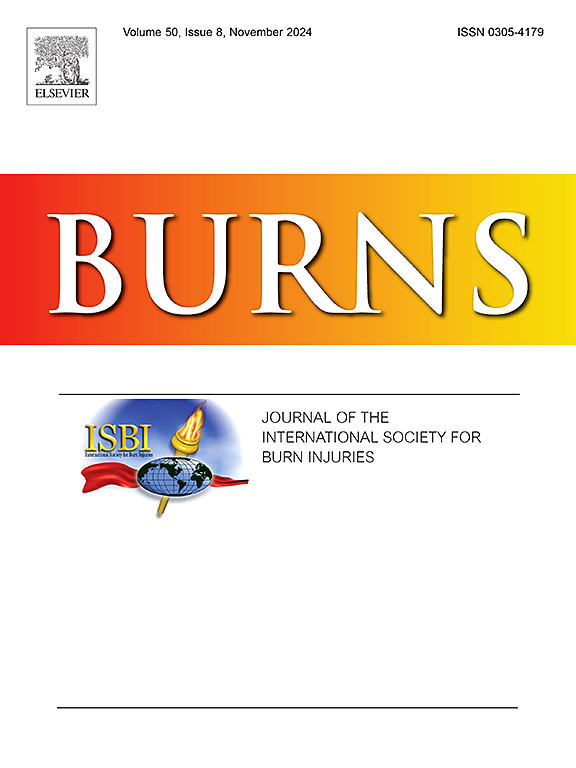Early coagulation disorder and the predictive value of D-dimer for deep vein thrombosis in major burn patients
IF 3.2
3区 医学
Q2 CRITICAL CARE MEDICINE
引用次数: 0
Abstract
Objective
To investigate coagulation disorders and thrombotic complications in the early stage after burn, and to evaluate the predictive reliability of D-dimer for deep vein thrombosis (DVT) diagnosis in major burn patients.
Methods
This retrospective study was performed in the Department of Burns, Southwest Hospital, and included 288 adult major burn patients (≥40 % TBSA) without prophylactic anticoagulant therapy. All patients received routine screening assays of coagulation indicators and Doppler ultrasound scan (DUS) during the 28 days post-burn regardless of the clinical symptoms of DVT.
Results
Coagulation abnormalities were commonly observed during the 28 days post-burn. There were 24 patients (8.33 %) diagnosed with DVT based on DUS on a median of 23 days after burn. Older age (OR=1.47) and increased insertions of central venous catheter (OR=1.67) were identified as independent risk factors for DVT. Serum D-dimer levels were elevated in 97.6 % (281/288) of patients in the first week post-burn. Patients identified with DVT had significantly higher serum D-dimer levels on the 3rd and 7th days post-burn. The D-dimer level on the 7th post-burn day showed a moderate predictive value for DVT by ROC analysis (AUC=0.711). The optimal threshold was 2.25 mg/L, with a sensitivity of 0.818 and a specificity of 0.566 at this threshold.
Conclusion
Early coagulation disorder can occur and last for over 28 days after major burn injury. The serum D-dimer level on the 7th post-burn day may be used as a risk factor to identify the individuals with high-risk of DVT among major burn patients.
求助全文
约1分钟内获得全文
求助全文
来源期刊

Burns
医学-皮肤病学
CiteScore
4.50
自引率
18.50%
发文量
304
审稿时长
72 days
期刊介绍:
Burns aims to foster the exchange of information among all engaged in preventing and treating the effects of burns. The journal focuses on clinical, scientific and social aspects of these injuries and covers the prevention of the injury, the epidemiology of such injuries and all aspects of treatment including development of new techniques and technologies and verification of existing ones. Regular features include clinical and scientific papers, state of the art reviews and descriptions of burn-care in practice.
Topics covered by Burns include: the effects of smoke on man and animals, their tissues and cells; the responses to and treatment of patients and animals with chemical injuries to the skin; the biological and clinical effects of cold injuries; surgical techniques which are, or may be relevant to the treatment of burned patients during the acute or reconstructive phase following injury; well controlled laboratory studies of the effectiveness of anti-microbial agents on infection and new materials on scarring and healing; inflammatory responses to injury, effectiveness of related agents and other compounds used to modify the physiological and cellular responses to the injury; experimental studies of burns and the outcome of burn wound healing; regenerative medicine concerning the skin.
 求助内容:
求助内容: 应助结果提醒方式:
应助结果提醒方式:


